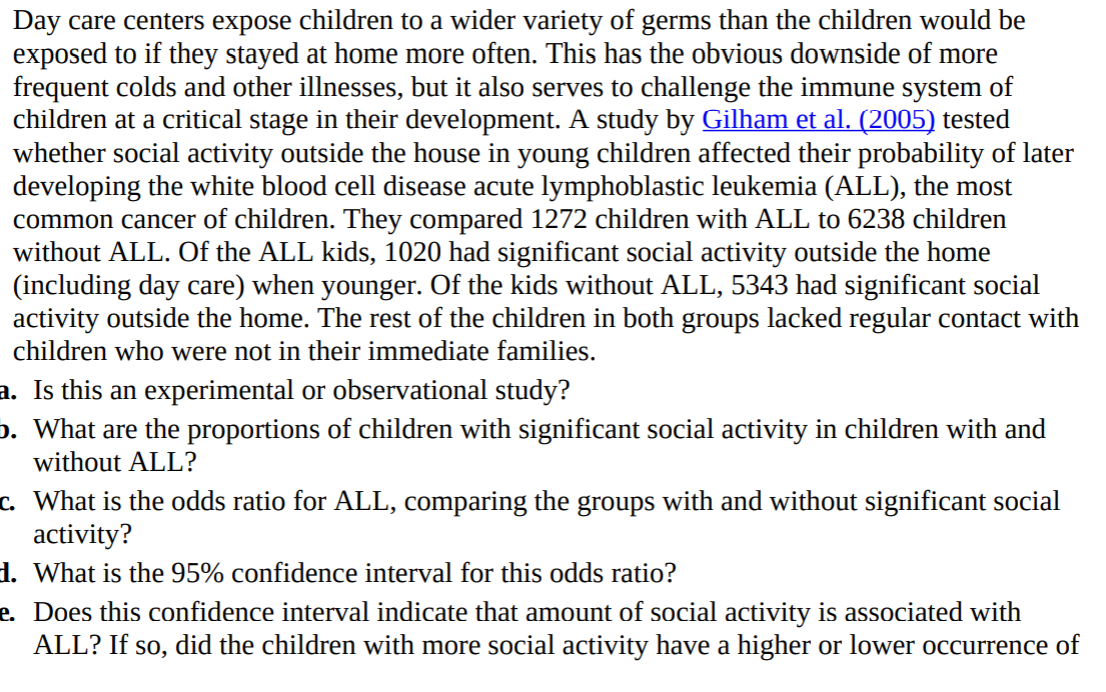Day care centers expose children to a wider variety of germs than the children would be exposed to if they stayed at home more often. This has the obvious downside of more frequent colds and other illnesses, but it also serves to challenge the immune system of children at a critical stage in their development. A study by Gilham et al. (2005) tested whether social activity outside the house in young children affected their probability of later developing the white blood cell disease acute lymphoblastic leukemia (ALL), the most common cancer of children. They compared 1272 children with ALL to 6238 children without ALL. Of the ALL kids, 1020 had significant social activity outside the home (including day care) when younger. Of the kids without ALL, 5343 had significant social activity outside the home. The rest of the children in both groups lacked regular contact witl children who were not in their immediate families. a. Is this an experimental or observational study? o. What are the proportions of children with significant social activity in children with and without ALL? c. What is the odds ratio for ALL, comparing the groups with and without significant social activity? 1. What is the 95% confidence interval for this odds ratio? e. Does this confidence interval indicate that amount of social activity is associated with ALL? If so, did the children with more social activity have a higher or lower occurrence o
Compound Probability
Compound probability can be defined as the probability of the two events which are independent. It can be defined as the multiplication of the probability of two events that are not dependent.
Tree diagram
Probability theory is a branch of mathematics that deals with the subject of probability. Although there are many different concepts of probability, probability theory expresses the definition mathematically through a series of axioms. Usually, these axioms express probability in terms of a probability space, which assigns a measure with values ranging from 0 to 1 to a set of outcomes known as the sample space. An event is a subset of these outcomes that is described.
Conditional Probability
By definition, the term probability is expressed as a part of mathematics where the chance of an event that may either occur or not is evaluated and expressed in numerical terms. The range of the value within which probability can be expressed is between 0 and 1. The higher the chance of an event occurring, the closer is its value to be 1. If the probability of an event is 1, it means that the event will happen under all considered circumstances. Similarly, if the probability is exactly 0, then no matter the situation, the event will never occur.

Trending now
This is a popular solution!
Step by step
Solved in 3 steps with 2 images




